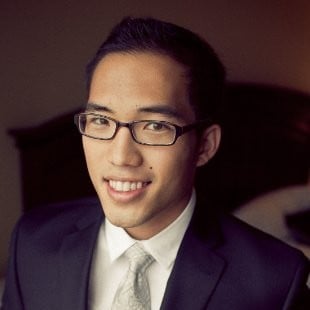Last Updated on June 26, 2022 by Laura Turner
One of the continuing challenges for medical schools both here in the United States and around the world is to find ways to select the students who will have the best chance of successfully completing their education. The goal of a good medical education, after all, is to train students who go on to become doctors, helping to fill the enormous global demand for well-trained, competent physicians. What might surprise many students, however, is how many different ways medical colleges around the world have come up with to find these ideal candidates–and how widely medical education varies from one country to another.
United States
The American system of admission to and training in medical school has been established for some time now. The path to becoming a medical doctor typically involves 4 years of undergraduate work (usually, but not always, in majors like biology or biochemistry) followed by 4 years of actual medical training, residency, and extra training for specialty areas. The competition for medical school slots in America is fierce, and US medical schools tend to admit candidates on the basis of a combination of factors, including MCAT scores and GPAs, as well as more personal qualifications reflected in personal statements, letters of recommendation, and of course interviews with the candidates themselves. The American system, increasingly, is trying for a holistic approach to candidate selection in order take on the students most likely to complete their medical education.
The United Kingdom and Continental Europe
American students might find the path to becoming a doctor in the UK or continental Europe to be rather surprising. The one facet of training in this part of the world which can cause particular comment is that fact that students can begin their medical training right out of high school. However, despite regulations from the European Union on many aspects of education and training, the means by which UK and European students become medical students varies widely from one country to another:
The UK
The United Kingdom, perhaps not surprising, combines some elements of traditional European medical education with some elements of the American style. Like students in continental Europe, UK students can enter right out of high school (though some do take degrees or get work experience in other fields first). However, this medical training lasts 6 years instead of the 4 years in American schools and this is followed by 2 years of intensive training called a foundation set for the newly qualified MDs that is similar to an American residency. MDs wishing to specialize will need more training still.
There are some distinctively American traits to the way that medical schools candidates are chosen in the UK, which is not surprising, given the close cultural ties between the two countries. All of the medical schools use some combination of academic and non-academic criteria to choose their students, and all but two have interviews as part of that selection process. In short, the selection is intended to be more personalized and to look more holistically at the medical schools candidates rather than just at matters of academic achievement.
The Majority of Continental Europe
The system by which students are trained in the majority of Europe, including southern European countries like Spain, Portugal, and Greece, as well as Belgium, Finland, Poland, and Romania, is somewhat similar. Once they have graduated from the European equivalent of high school, students can begin their six-year course in medical education, with a residency-like period and more training for speciality areas to follow. However, the criteria for admission to these schools is very different: most countries save the vast majority of their medical seats (sometimes as many as 90%, in fact) for students based solely on their academic achievement (grades in high school courses like physics, biology, chemistry and math and scores on national exams), reserving as little as 10% of slots for candidates who have other qualities to offer.
France
France’s system of medical school admission is surprisingly simple, though again it may seem quite alien to American students. In France, anyone with a high school education can apply to medical school, regardless of their GPA or what courses or exams they opted to take. The catch here is that in order to pass on to their second year of medical school, students must pass a course of rigorous exams.
Germany
Germany is also unique among other European countries in that it offers three paths for entrance into medical school: schools reserve around 20% of their seats for students with the top grades and test scores, another 60% for students who meet a variety of criteria (among which are grades) similar to many American medical schools, and then another 20% for what Americans term non-traditional students: those who have waited a substantial period of time between finishing high school and beginning their medical career. Grades do not weigh as heavily for these students.
Eastern Europe
The Czech Republic, Hungary, and Bulgaria–in order to encourage international students–have two sets of criteria for medical school: for natives, the decision is made on academics alone, while for international students, admission is based both on grades and other more personal factors. There is a whole set of classes taught in English for these international students who, unlike their native counterparts, pay tuition for their training.
Australia
In Australia students may also begin their medical training right after high school, although it is a grueling, multi-tiered course which includes the follow steps:
1. Graduating from high school
2. Completing 4-6 years of medical school
3. Completing a 1 year internship
4. Completing a 1 year residency
5. Completing a speciality programs called a Registrar which can vary in length
6. Completing a 1-2 year fellowship in a subspecialty area
7. Completing additional training in your speciality are to become a Specialist Consultant such as a surgeon, GP, physician or other specialists such as an anesthetist, dermatologists or OB-GYN.
The Australian Medical Association estimates that this process takes an average of 12 years, which might explain why they allow candidates to begin it at such a young age. Admission is largely based on academic performance and UMAT or GMSAT scores (tests that are similar to the MCAT). However, like American medical schools, some Australian medical schools do include interviews as part of their process and candidates are encouraged to do volunteer work at hospitals or other healthcare settings to show that they have some experience in the job field which they are considering.
India
India, by dint of its population, produces a tremendous number of physicians, many of which practice in the United States and around the world. The Indian medical system, also begins young: students are around 18 right after completing their high school education and the entire course lasts 5.5 years, including 1 year of housemanship, the equivalent of an American internship. This makes it one of the shortest medical education programs in the world. It is also unique because its medical admissions process is based solely on scores to the national entrance exam. The higher a student scores, the more prestigious a medical school they are able to attend.
The Takeaway
The point here is not to figure out what system is superior to another. As a matter of fact there are some similarities between all of these methods of medical education: grades and test scores do count, though they are not given equal weight in all countries. And some countries, in their search for candidates that are going to weather the storm of medical education and go on in their careers to be competent and caring physicians, also take into account things like student personality, letters of reference, interviews, and personal statements.
These differences, however, underline the perrenial tensions between the use of academic and non-academic criteria for deciding which candidates will be best suited to medical school. On the one hand, there is evidence to suggest a strong correlation between success on the entrance exam and success in school itself, as a recent Canadian study showed. On the other hand, strong criticisms have been made of medical schools who admit students based solely on academic success in countries where there are large educational disparities, as this can lead to underrepresentation of students from low socioeconomic or isolated, rural backgrounds.
On the other hand, there can also be problems with the use of informal interviews, personal statements and other nonacademic criteria used for admissions. These may not only be subject to personal bias on the part of the admissions committee; there is also questionable evidence that these methods help in more effectively selection successful students.
These tensions are not likely resolve themselves anytime soon. In medical schools both in the United States and around the world, admissions committees will continue to try to strike that elusive balance in order to improve the process of finding the very best students to fill coveted slots in medical education.
References
Becoming a Doctor. Australian Medical Association. 2016.
www.ama.au/careers/becoming-a-doctor
Gopinathi, S. Inside India: The Path to Becoming a Doctor. Medscape. 2011.
www.medscape.com/viewarticle/747008
Martins Martihna, A. Becoming a Doctor in Europe. AMA Journal of Medical Ethics. 2012. 14:12.
984-988
Medical Education in the U.K.:an Overview. Royal College of Obstetricians and
Gyneacologists. 2016.
www.rcog.org/uk/en/career-training


